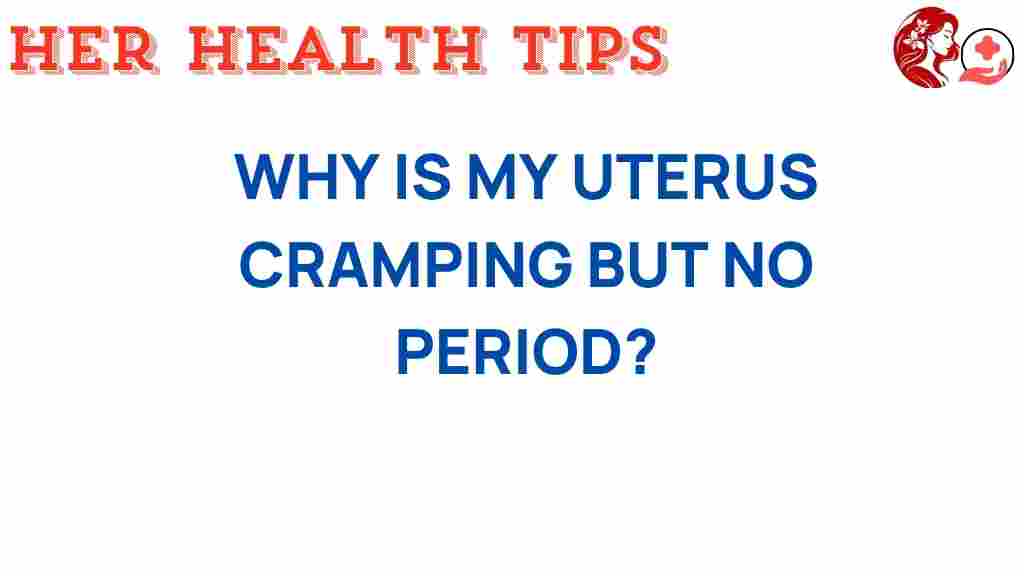Unraveling the Mystery: Why Is My Uterus Cramping Without a Period?
Experiencing uterus cramping without a period can be a confusing and concerning experience for many women. While cramps are often associated with the menstrual cycle, various factors can lead to cramping at different times of the month. In this article, we will explore the potential causes of uterus cramping outside of your regular cycle, the role of pregnancy and ovulation, the impact of hormonal imbalances, and other health concerns that may arise. We aim to equip you with the knowledge to understand your reproductive health better and recognize when it’s necessary to seek medical advice.
Understanding Uterus Cramping
Uterus cramping refers to the sensations of discomfort or pain that can occur in the pelvic area. These cramps can vary in intensity and duration. While many associate cramps with menstruation, they can also occur at other times due to various physiological changes or health issues.
The Menstrual Cycle and Uterus Cramping
The menstrual cycle typically lasts between 21 and 35 days and is divided into several phases:
- Menstrual Phase: Shedding of the uterine lining.
- Follicular Phase: Development of follicles in the ovaries.
- Ovulation: Release of an egg from a follicle.
- Luteal Phase: Preparation for a potential pregnancy.
Cramping can occur during any phase but is most commonly associated with the menstrual phase. However, cramps can also arise during ovulation, which occurs approximately midway through the cycle.
Common Causes of Uterus Cramping Without a Period
When you experience uterus cramping without a period, it can be attributed to several factors:
1. Ovulation
Many women experience ovulation pain or mittelschmerz, which occurs when the ovary releases an egg. This can result in cramping on one side of the pelvis and may last for a few hours to a couple of days.
2. Pregnancy
Cramping can also be an early symptom of pregnancy. Implantation cramps may occur when the fertilized egg attaches to the uterine lining. These cramps can be mild and are often accompanied by other symptoms such as:
- Light spotting
- Nausea
- Breast tenderness
- Fatigue
3. Hormonal Imbalance
Hormonal imbalances can lead to irregularities in your menstrual cycle and cause cramping. Conditions such as polycystic ovary syndrome (PCOS) or thyroid disorders can disrupt hormonal levels and result in pelvic pain.
4. Pelvic Inflammatory Disease (PID)
PID is an infection of the reproductive organs that can cause significant pelvic pain and cramping. It often occurs due to sexually transmitted infections (STIs) and requires prompt medical treatment.
5. Fibroids or Endometriosis
Uterine fibroids and endometriosis can cause chronic pelvic pain and discomfort. These conditions may lead to cramping even when you are not on your period.
6. Stress and Lifestyle Factors
Stress can significantly affect your menstrual cycle and overall reproductive health. High-stress levels can lead to hormonal fluctuations, resulting in cramping. Lifestyle factors such as diet, exercise, and sleep also play a crucial role in menstrual health.
Identifying Early Pregnancy Symptoms
If you suspect that your uterus cramping could be related to early pregnancy, consider the following symptoms:
- Missed period
- Breast changes (tenderness, swelling)
- Frequent urination
- Fatigue
- Changes in appetite
If you experience these symptoms alongside cramping, it may be advisable to take a home pregnancy test or consult with a healthcare professional.
Troubleshooting Tips for Uterus Cramping
When dealing with uterus cramping, there are several steps you can take to alleviate discomfort:
- Heat Therapy: Apply a heating pad or hot water bottle to your abdomen to soothe cramps.
- Hydration: Drink plenty of water to stay hydrated and help reduce bloating.
- Gentle Exercise: Engage in light activities such as walking or yoga to improve blood circulation.
- Over-the-Counter Pain Relief: Consider using medications like ibuprofen or acetaminophen to manage pain.
- Relaxation Techniques: Practice deep breathing, meditation, or gentle stretching to reduce stress levels.
When to Seek Medical Attention
While occasional uterus cramping may not be a cause for alarm, certain situations warrant a visit to your healthcare provider:
- Severe or worsening pain
- Cramping accompanied by heavy bleeding
- Fever or chills
- Unusual discharge or odor
- Symptoms of pregnancy with negative home tests
It’s essential to prioritize your reproductive health and seek advice from a medical professional when you are unsure about your symptoms.
Conclusion
Understanding the reasons behind uterus cramping without a period can help you navigate your reproductive health more effectively. Whether it’s linked to ovulation, pregnancy, hormonal imbalances, or other health concerns, recognizing the signs and symptoms can empower you to take appropriate action. If you experience persistent discomfort or any alarming symptoms, do not hesitate to consult a healthcare professional for guidance.
For more information on reproductive health and management of menstrual symptoms, visit this resource. Remember, your health is paramount, and staying informed is the first step towards better well-being.
This article is in the category Reproductive and created by HerHealthTips Team
